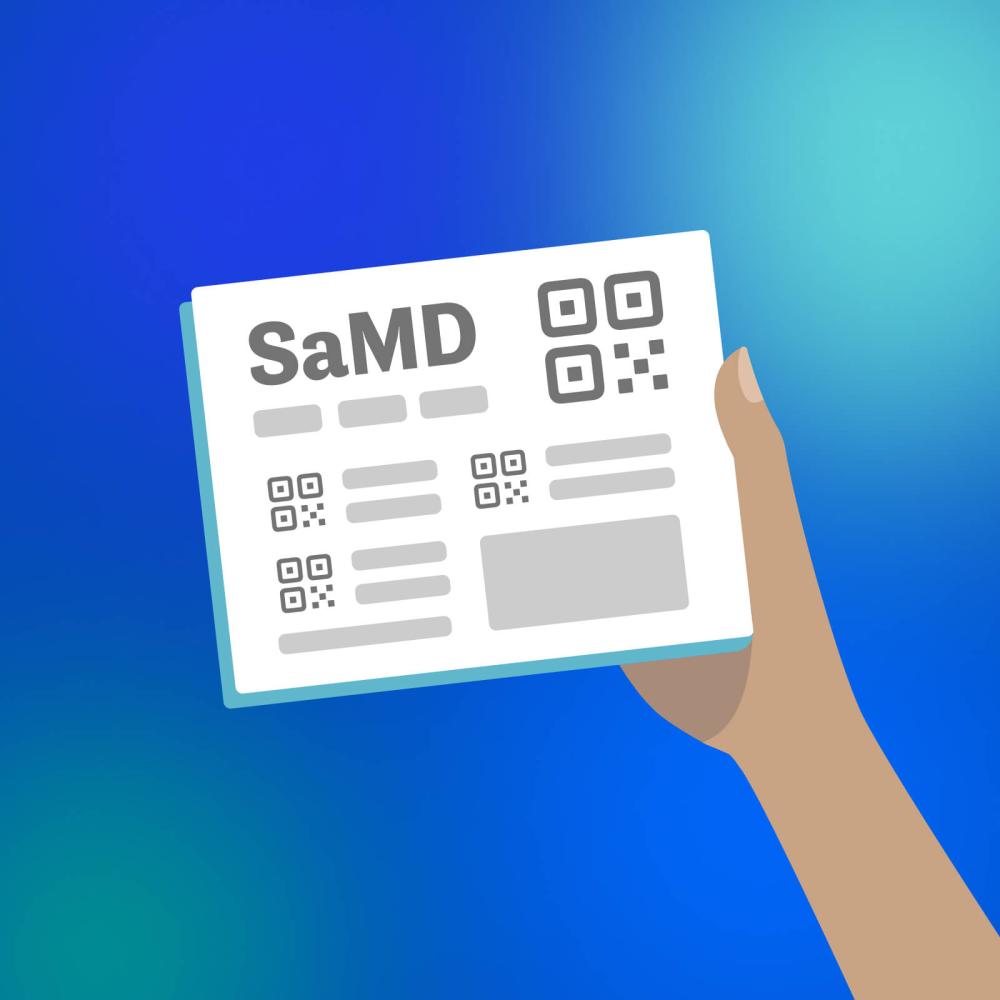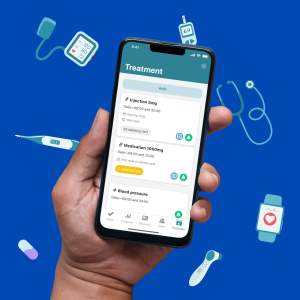Is SaMD the Rx of the Digital Health World? Similarities and Differences
Software as a Medical Device (SaMD) is often thought of as the Rx of the digital health world. While this may feel intuitive to pharma, crucial differences exist between the classifications of pharmaceuticals and digital health

- SaMD is often considered the Rx of the digital health world due to the more stringent regulations that exist for each
- While similarities exist, such as the potential to cause harm being greater than it is for their OTC and non-SaMD counterparts, critical differences exist
- Thinking of SaMD & non-SaMD in the same way as Rx & OTC can lead to misconceptions about digital health programs and their quality, use cases, and risk profiles
Software as a Medical Device (SaMD) is often perceived as the digital health equivalent of prescription-only (Rx) medications. SaMD products, including digital therapeutics (DTx), are regulated in a way that non-SaMD digital health products are not. However, thinking of SaMD and non-SaMD products as the Rx and over-the-counter (OTC) medications of the digital health world might lead to some misconceptions regarding their quality, use cases, and risk profiles.
SaMD & non-SaMD Compared to Rx & OTC: Why Does it Matter?
The importance behind how SaMD and non-SaMD are perceived, particularly within the pharma industry, is related to the strategic decisions made by those responsible for digital health initiatives. Simply thinking of SaMD and non-SaMD in the same manner as Rx and OTC may lead to the notion that non-SaMD programs are less ‘potent’ or effective than their SaMD counterparts or are perhaps less valuable in the treatment and management of chronic diseases, which is not necessarily the case. So how should an industry familiar with the dichotomy of the Rx and OTC labels perceive SaMD and non-SaMD products?
SaMD & non-SaMD: It’s All About Use Cases
Perhaps the most significant difference between the classification of pharmaceuticals and digital health programs is that the potency of a pharmaceutical is fundamental to it being Rx or OTC, due to the greater physical effects that stronger drugs have on the body. If there were a single potency metric that could be applied to all pharmaceuticals, there would be a threshold at which point the classification changes from OTC to Rx. In some cases, this threshold exists; ibuprofen is a good example of a drug that becomes Rx past a certain strength.
For software, the concept of potency does not apply; rather, the classification of software is based on the intended use case(s). Any software that is designed to treat, diagnose, prevent, mitigate, or cure a condition – either standalone or in combination with a pharmaceutical – is a medical device. Non-SaMD programs serve none of these functions.
SaMD programs should, therefore, not be viewed as ‘stronger’ than non-SaMD programs. They simply serve distinctly different functions and deliver value in different ways.
While not serving explicit therapeutic functions, non-SaMD software can play an important role in patients’ treatment by driving adherence; delivering educational materials; tracking symptoms, side effects, and health metrics; and providing a range of other functionalities. Software of this nature can be extremely effective and developed to the highest standards without ever being classed as SaMD.
Although the distinction between SaMD and non-SaMD is based on use cases, it is worth noting that individual components of a single piece of software can be categorized differently. If, for example, a mostly non-SaMD program has a particular feature that does meet the criteria for SaMD, then that specific component must meet medical device standards. Nonetheless, the distinction still boils down to use cases rather than strength or potency.
While the ‘potency versus use case’ factor is a key difference between Rx/OTC and SaMD/non-SaMD products, there is a commonality that arises through these two different paths: the potential to cause harm.
SaMD & non-SaMD: Risk & Potential for Harm
The link between a pharmaceutical product’s potency and its potential to cause harm is closely related, with the previous example of ibuprofen being a case in point. Similarly, the identified use cases for SaMD programs are intrinsically linked to the potential to cause harm. Software that treats, diagnoses, prevents, mitigates, or cures a condition poses a greater risk to users than other forms of digital health programs, such as patient support programs.
Of course, software’s risk is not linked to direct physical side effects, the possibility of overdosing, interacting with other substances, or any other such concerns associated with pharmaceuticals. Rather, the potential for harm is generally linked to subsequent events and actions. If, for example, a digital therapeutic is used to replace or reduce the use of antidepressants and/or psychiatrist consultations, the potential for harm is derived from a lack of use on behalf of patients. This could see the worsening of conditions such as clinical depression.
Other SaMD programs might provide medical advice to patients without any direct input from healthcare professionals – something that is only going to become more prevalent with the pervasiveness of AI in digital health. Such tools hold the potential for harm if patients act upon inaccurate or incomplete recommendations. Similarly, if software is relied upon for diagnostics, the risk of a software-caused misdiagnosis carries significant potential for harm based on the subsequent treatment decisions that might be made.
The severity of the risk(s) posed by SaMD defines its specific classification within the medical device system, as is the case with any other medical device.
As such, the potential for harm is key in the classification of both Rx pharmaceuticals and SaMD digital health tools, with each carrying greater risks than their OTC and non-SaMD counterparts. However, the manner in which the potential manifests itself differs significantly.
In short, the comparison between Rx/OTC and SaMD/non-SaMD is not completely without merit, as similarities do exist. But the comparison is far from perfect, so one must be careful in drawing conclusions about digital health programs based on their classification using logic derived from the familiarity of the Rx and OTC labels.
Speak to Us About Your Digital Health Ambitions
We work with pharma to launch digital health programs that deliver real-world value to patients and HCPs. We work with partners to identify the relevant use cases and the most effective approach to achieve the desired impact, whether that results in an SaMD or non-SaMD solution. Both can be run on our MyTherapy platform, which has over nine million users and significant patient populations in most therapeutic areas. Our ISO 13485-certified quality management system (QMS) and ISO 27001-certified Information Security Management System (ISMS) reflect our capability to safely and securely run SaMD programs
If you would like to speak to us about your digital health ambitions and how our MyTherapy platform can help you deliver measurable value to patients, don’t hesitate to book a meeting.





